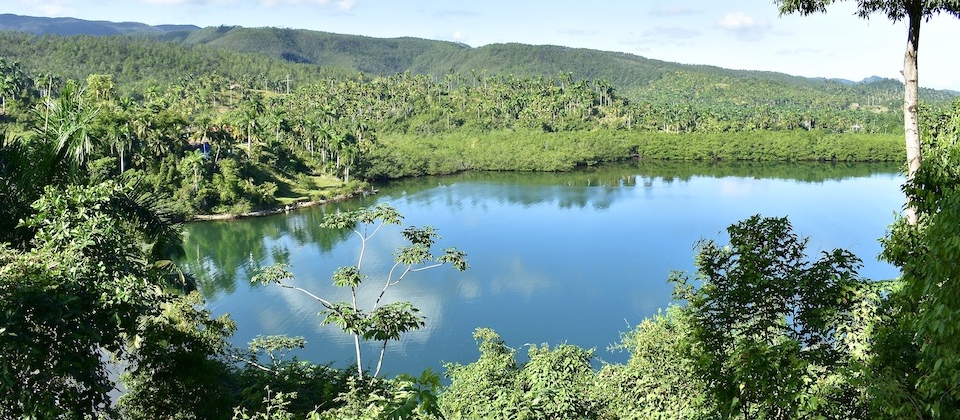
Published on 21 October, 2017.
Alexander Humboldt National Park (AHNP, UNESCO World Heritage Site) embodies a unique approach to the relation between human beings and their environment. A hike through the park will offer you a living portrait of the coexistence of rural communities and natural wonders.
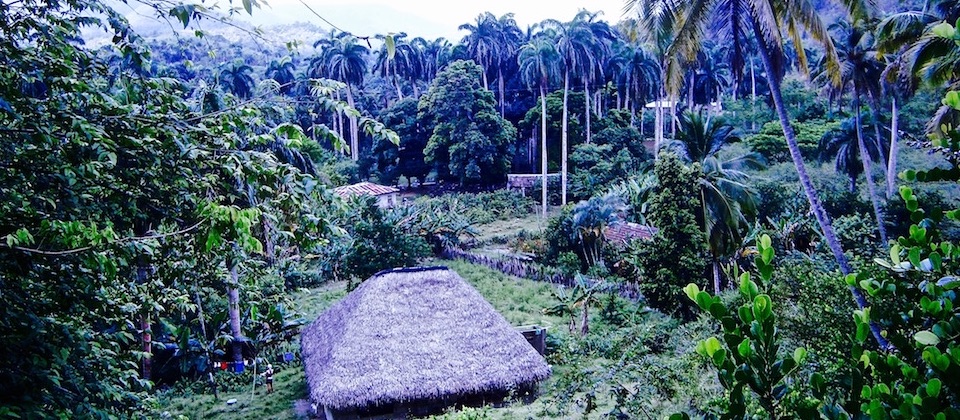
In this blog post we talk about such community conservation strategies, then about the rich local fauna and, finally, two neat activities you can enjoy at the national park: a rowing boat trip around Taco Bay and a hike along the Balcón de Iberia trail.
An Ever-Growing Harmony in View of Conservation
Roughly 3,000 people live within Alexander Humboldt National Park’s Baracoa Sector. Composed of agricultural, fishing and forestry workers, these small communities were already there before the creation of the national park and the Cuchillas del Toa Biosphere Reserve, within which the park lies.

The staff in charge of Humboldt Park multiplies awareness-enhancing strategies among local folk, striving towards a solid understanding and the generalization of integrated environment conservancy practices.
Thus, park rangers offer educational activities in the context of the celebrations marked throughout the year’s calendar, such as the Day of the Child and Mothers’ Day.
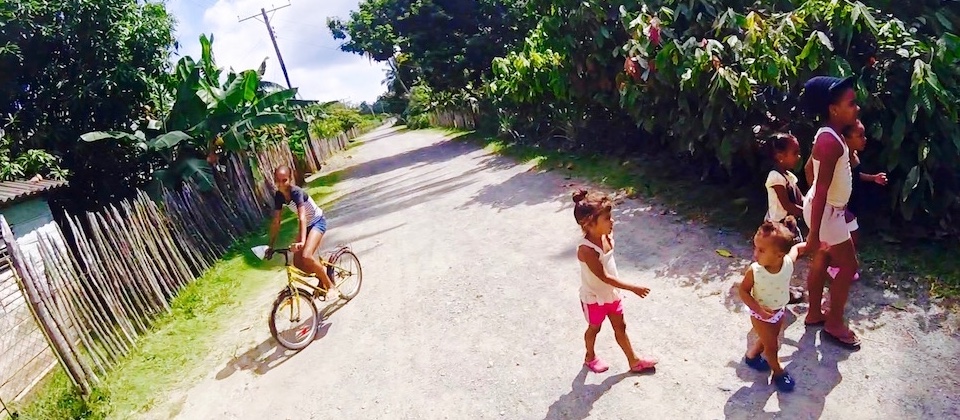
On the picture below, we can see a group of AHNP-dwelling women sharing experiences and learnings on March 8th, 2022, for International Women’s Day.
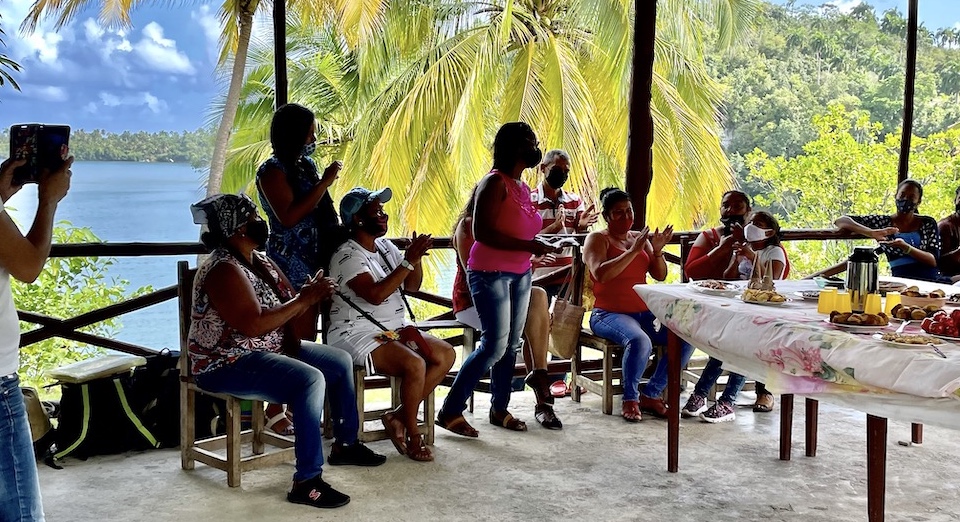
If you wish to learn more in detail about some of the park’s families’ eco farming undertakings, we recommend our blog post on the topic.
On Part 1 of this blog entry, you can read about Alexander Humboldt National Park’s general ecological facts. We will now talk about AHNP’s amazing fauna.
The Fauna in Humboldt Park, Colourful and Unique
In terms of animal species, 30 % of mammals, 21 % of birds, 83.3 % of reptiles, 95.8 % of amphibians and 27.7 % of insects in Humboldt Park are endemic to the region or the country. Several of them are considered threatened and require highly specialized management approaches, such as the Almiquí (Solenodon cubanus), a critically endangered species.

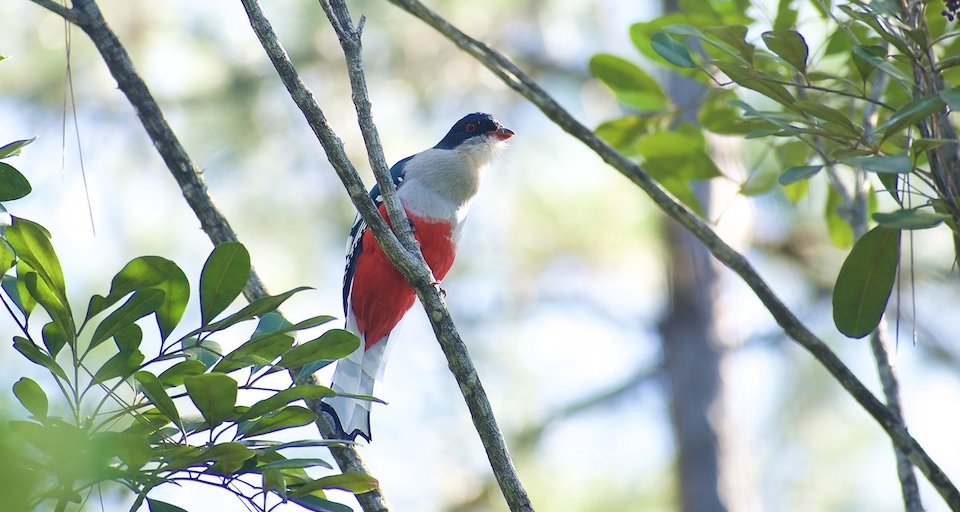
During your visit to Humboldt Park, you’ll be able to observe birds such as the Cuban trogon (Priotelus temnurus, Cuba’s national bird), the minute and colourful Cuban Tody (Todus multicolor), the Western Spindalis (Spindalis zena pretrei) and, last but not least, the Bee Hummingbird (Mellisuga helenae), the smallest bird in the world and the intriguing Stygian Owl (Asio stygius siguapa).
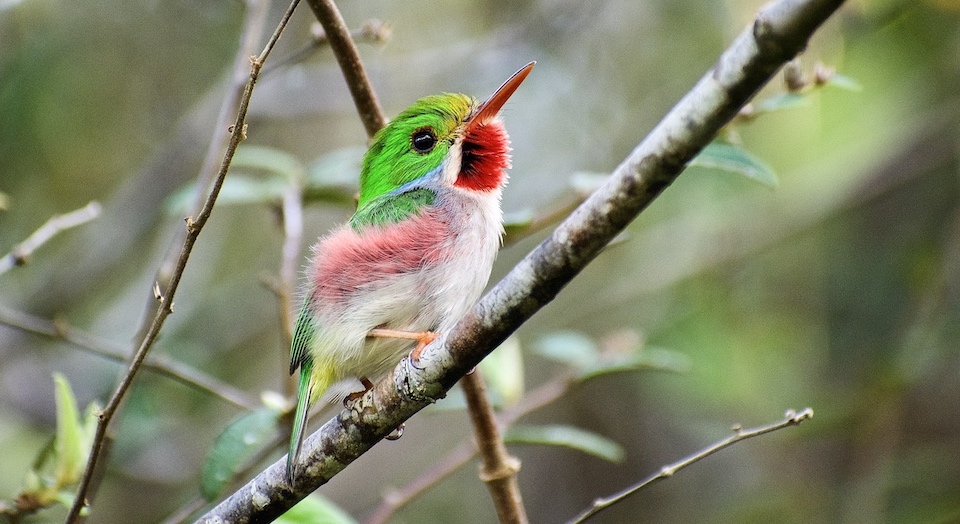
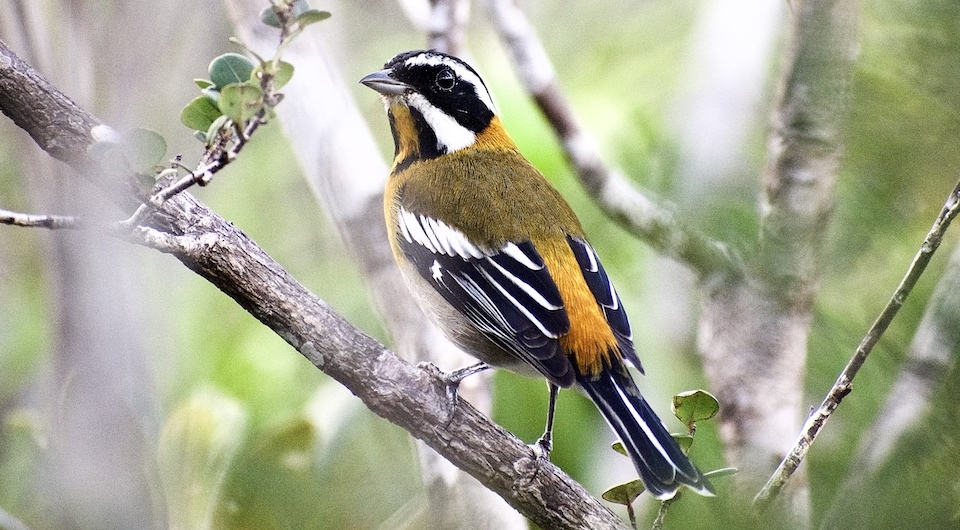
If you enjoy birding (also known as birdwatching), in a future blog post we will offer you more details about the Cuban or Caribbean endemic species you can find in our region.
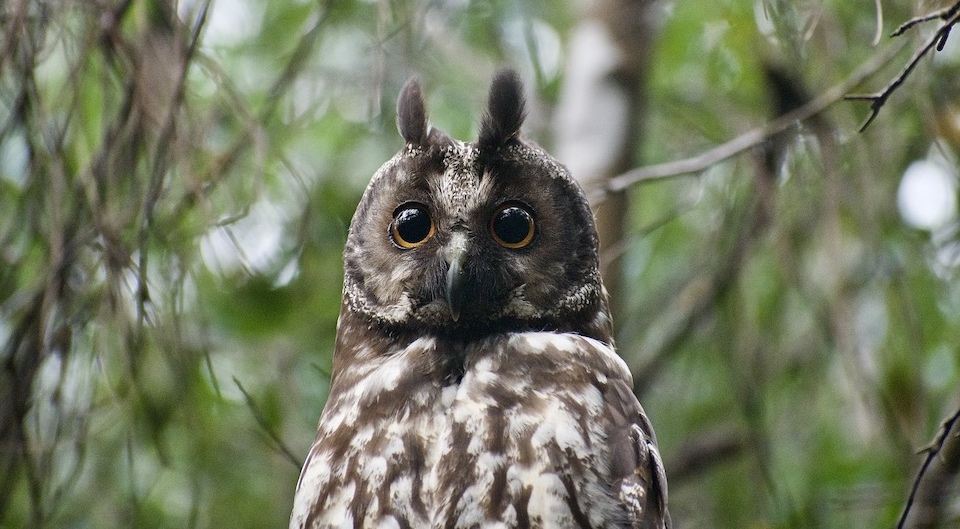
Other unique species that live in the park include the Mount Iberia frog (Eleutherodactylus iberia), which measures roughly 1 cm (less than half an inch), the multicoloured Polimita tree snails (Polymita picta) and a range of amphibians and reptiles that are endemic to the region.
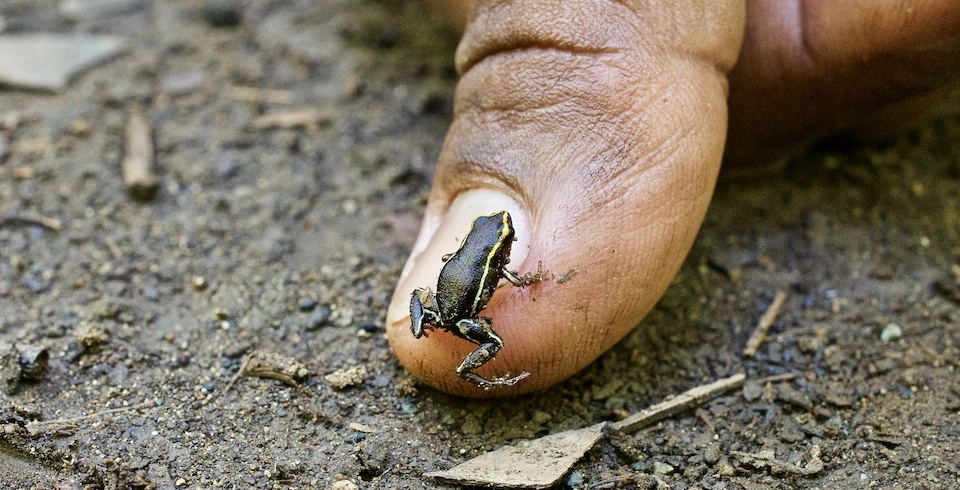
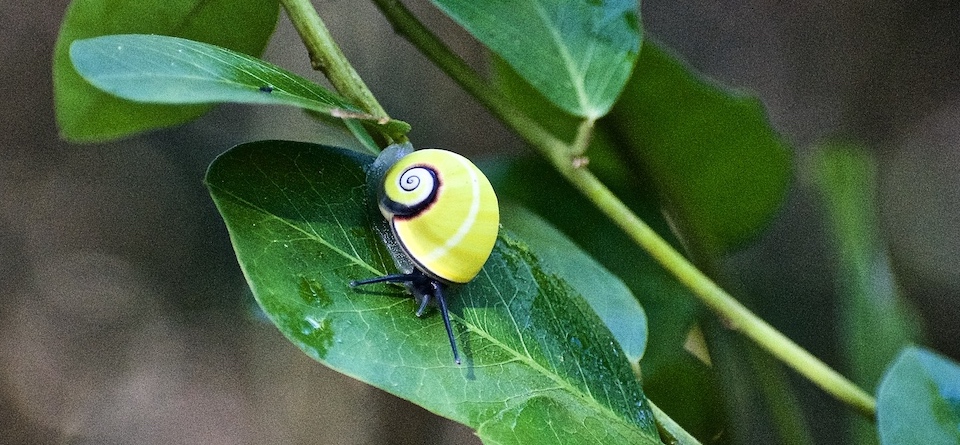
Furthermore, in Taco Bay there are Caribbean manatee families (Trichechus manatus, considered endangered). Currently, AHNP is launching a new marking and satellite monitoring program to follow these mammals, better understand their habits and more effectively protect them.
On Part 1 of this blog entry you can read more about the flora in Alexander Humboldt National Park.
A Boat Tour Around Taco Bay
Taco Bay is an integral part of Humboldt Park. Few travellers opt for the boat ride in this bay considered to be a “simply sublime” place by the wonderful Caroline Krauze, a French blogger specializing in family travel (Voyage Family).
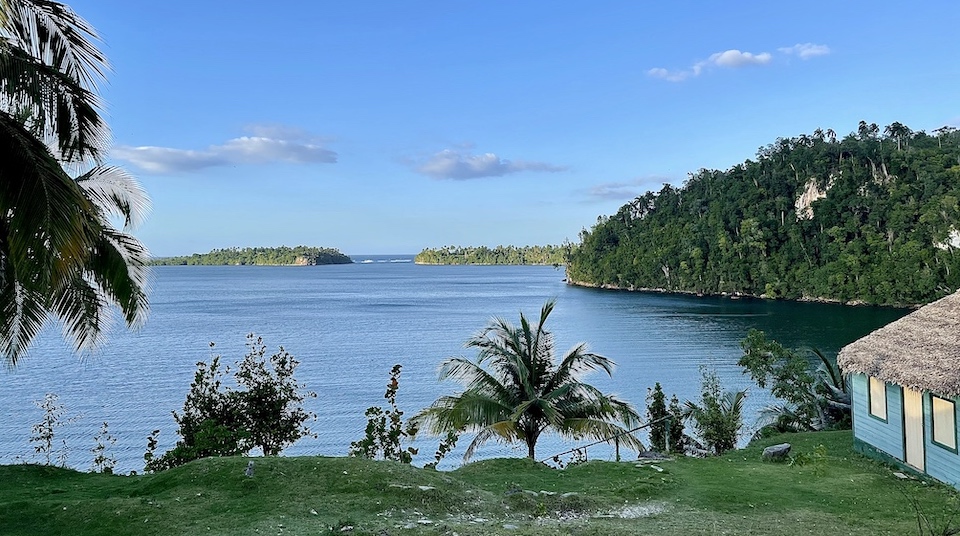
The boat ride is 2 km long along the bay shores (don’t panic – it won’t be you who’ll do the rowing, but a physically fit member of Humboldt Park’s staff!)
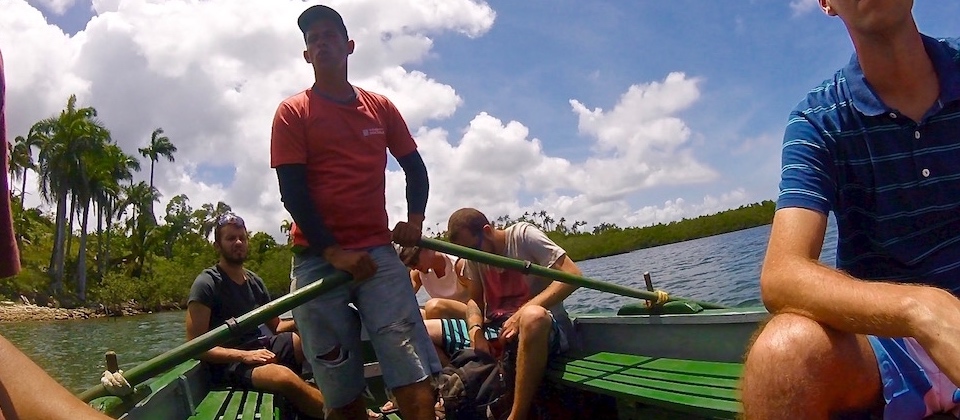
If you are lucky to take this boat ride on a good day, the manatee who make the bay their habitat might come close to the boat and greet the visitors.
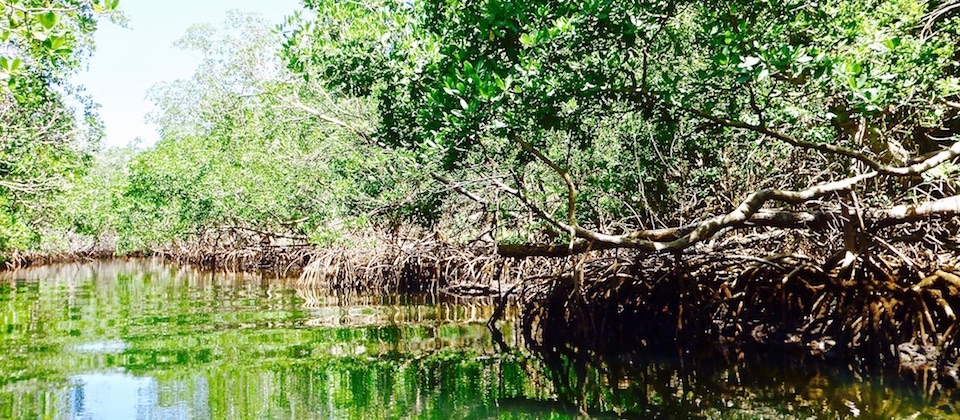
At some point doing the 2 hours ride, the boat goes in depth into the dense mangroves surrounding the bay and you’ll be able to watch different kinds of waterbirds.
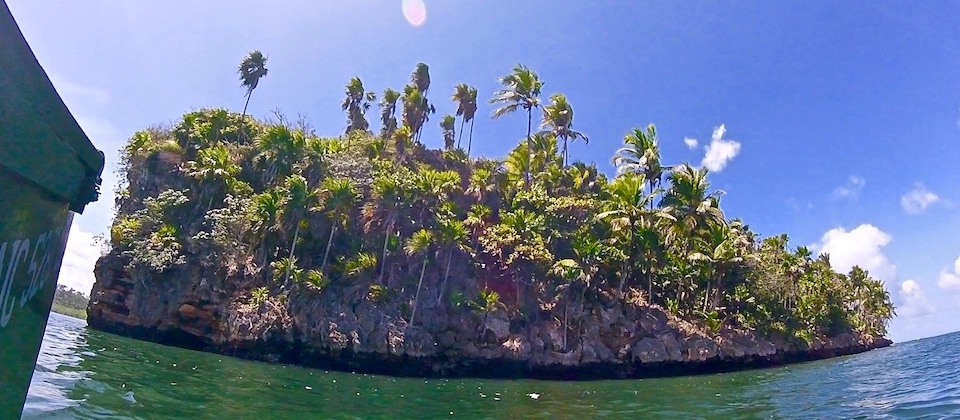
Later on, the boat gets close to the bay mouth, with its limestone forms covered by palm trees shining under the sun, before starting the way back to the departure area.
A Hike on Balcón de Iberia Trail
At 5 km-long, Balcón de Iberia trail is one of the longest of those available at AHNP for a one-day excursion. The starting point is located at the Santa Maria community. The hike begins with a long uphill stretch with beautiful views both to your left and right, showcasing green mountain landscapes and hybrid, farm-nature flora.
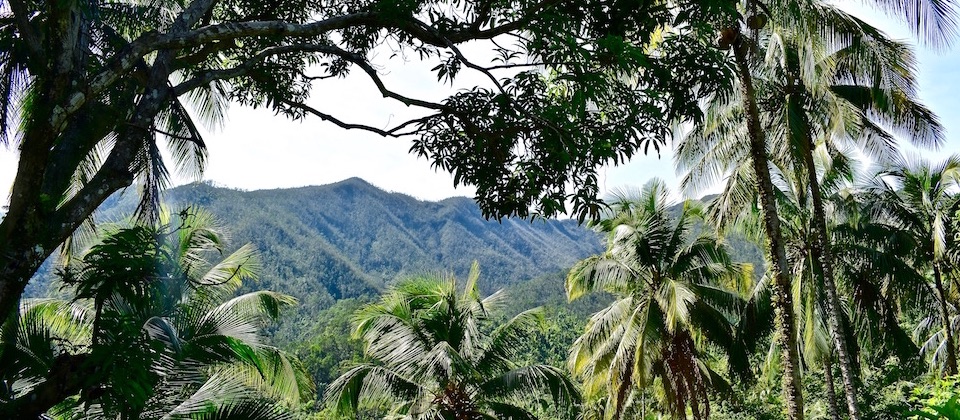
Indeed, Balcón de Iberia trail constitutes a round trajectory covering two types of plants systems. On the first part of the hike, you’ll see royal palms (Roystonea regia, Cuba’s national tree), coconut trees, fruit trees and different medicinal plants. The interaction between human beings and nature is quite visible here. Further down, you will enter a dense tropical rain forest.
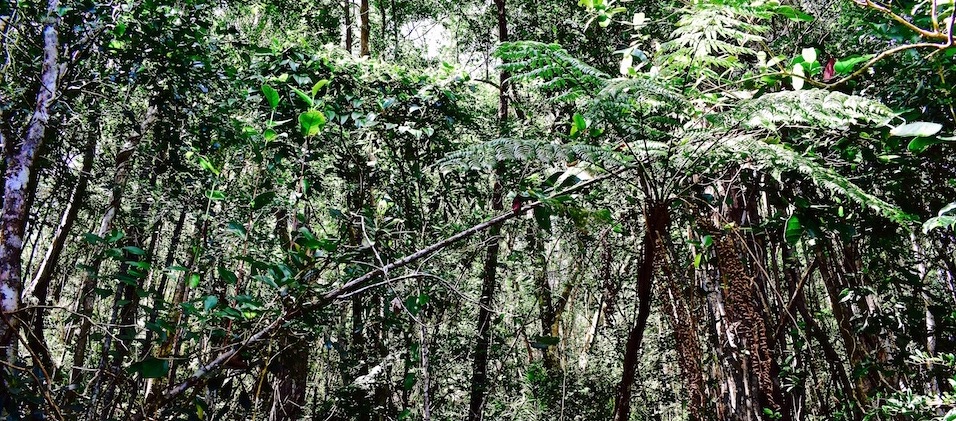
The first part of the hike goes up, while the second one descends. You will be able to see tree ferns (Cyathea parvula), Pajúa palm trees (Bactris cubensis), Mayarí pine trees (Pinus cubensis)… Cuban Trogons, Cuban Todies, Broad-Winged Hawks, Mount Iberia frogs, and various kinds of Anolis lizards…
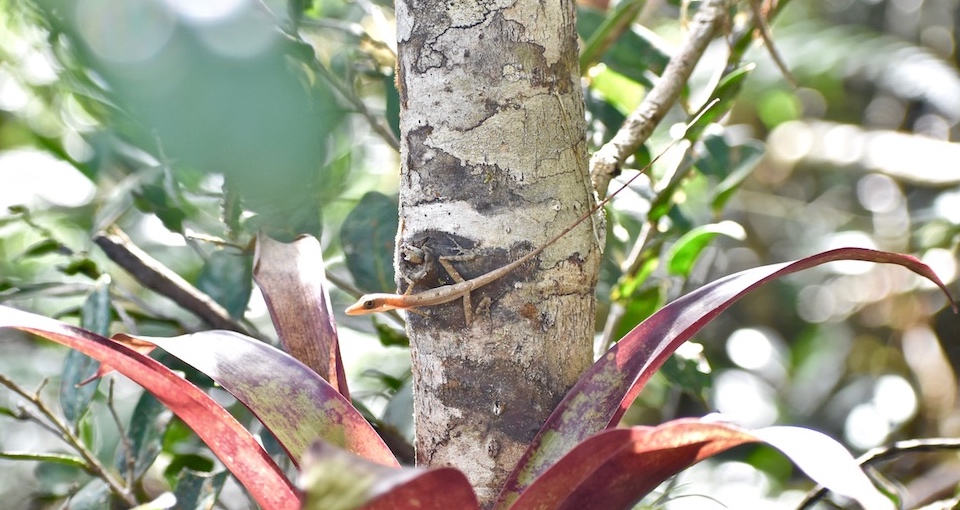
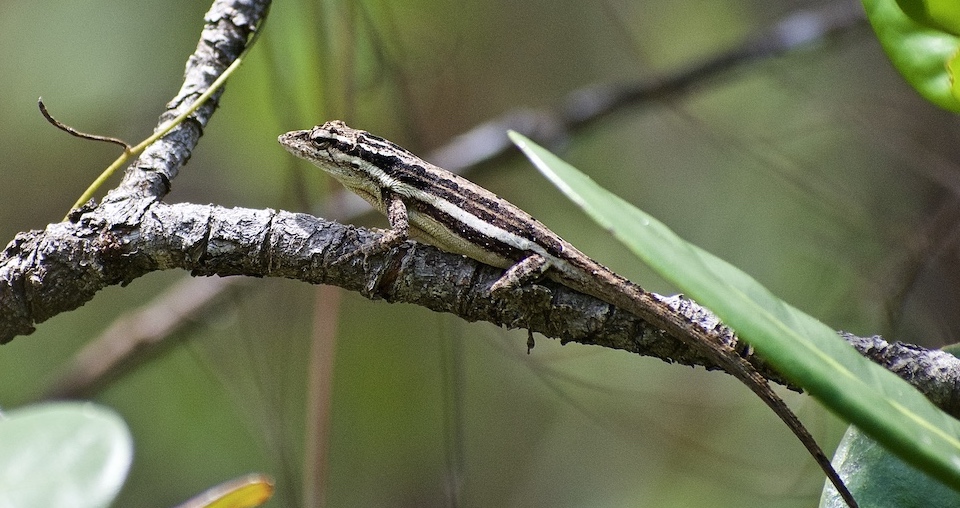
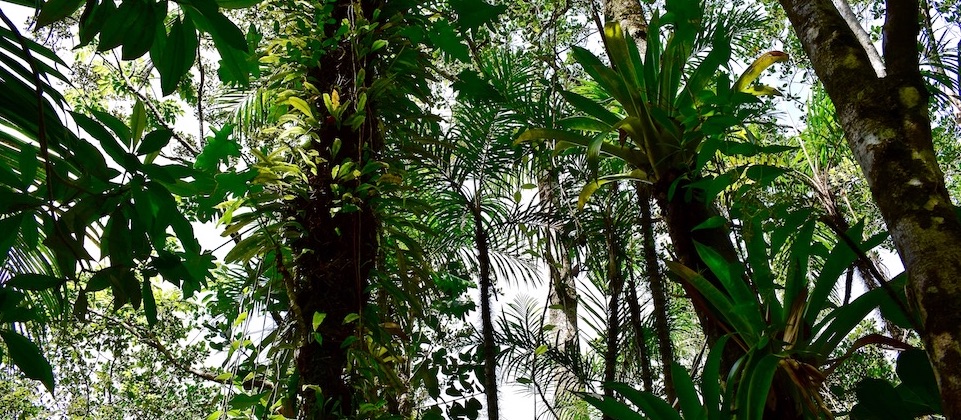
At the end of this trail, you’ll find El Majá waterfall, on river Santa María, where you will be able to cool down in the clear waters after the long walk.
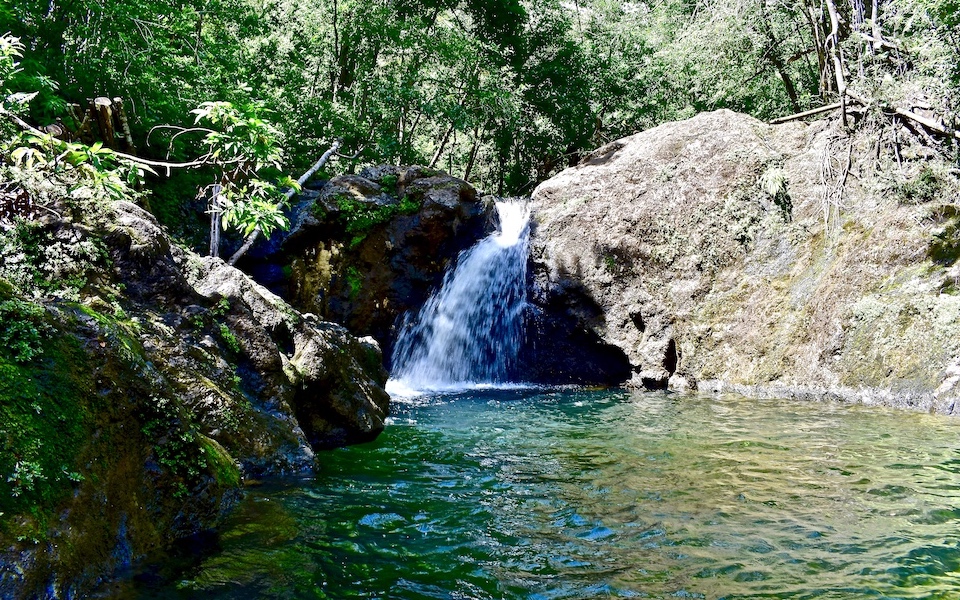
On Part 1 of this blog entry we tell you about El Copal trail and El Recreo trail at Alexander Humboldt National Park, whose lengths are 2 km and 3 km respectively.
If you like somewhat longer, more demanding hikes, we recommend that you read our post about the Loma de Piedra trail, which is about 8 km (5 miles) long. And soon we’ll post an entry about the 2-day excursion to the Iberia Plateau and Lagoon, including mount Tetas de Julia.
How About a Beautiful Beach After Humboldt Park?
Numerous travelers combine a visit to Alexander Humboldt National Park with a bit of time at the beach. Two lovely options are available to you after exploring the Park: the very popular Maguana beach and the seldom visited, off-the-beaten-path Mapurisí beach.
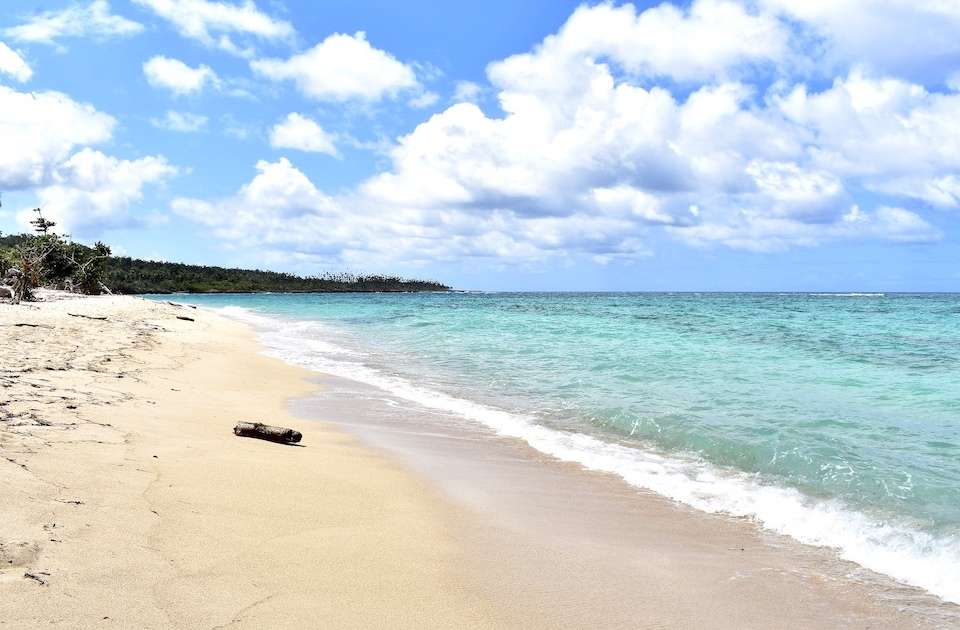
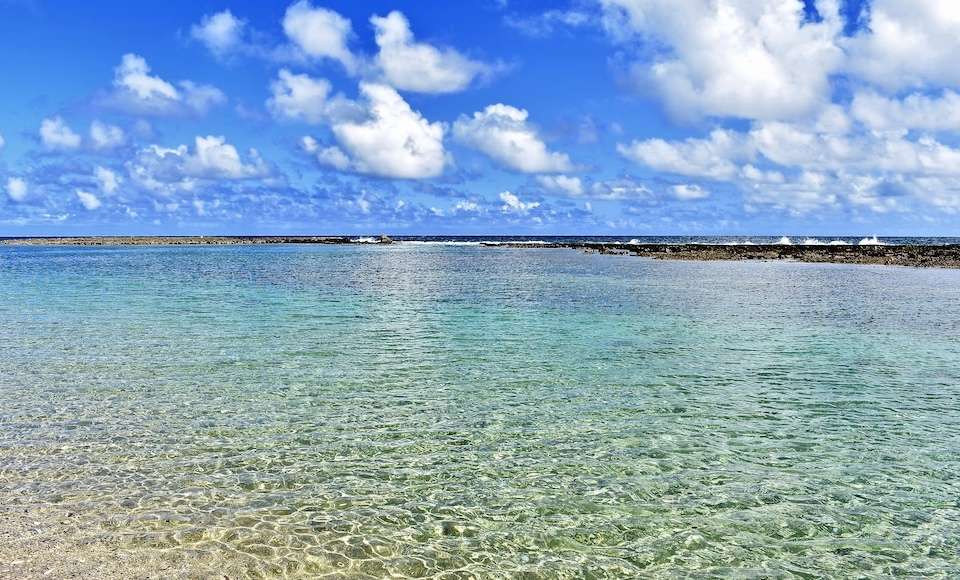
Did You Know?
Roughly 5 440 people live within one of Alexander Humboldt National Park’s 4 Sectors or Conservation Departments: Baracoa, Cupeyal del Norte, La Melba and Ojito de Agua. The average population density is of 8 inhabitants per square kilometer.
In the Baracoa Sector of the park, local communities include Nibujón, Madre Vieja, El Recreo, Santa María, Yamanigüey and Naranjo del Toa. The main crops in these communities are coffee, coconut, and cacao. They also grow fruit trees and a wide range of vegetables for local consumption.
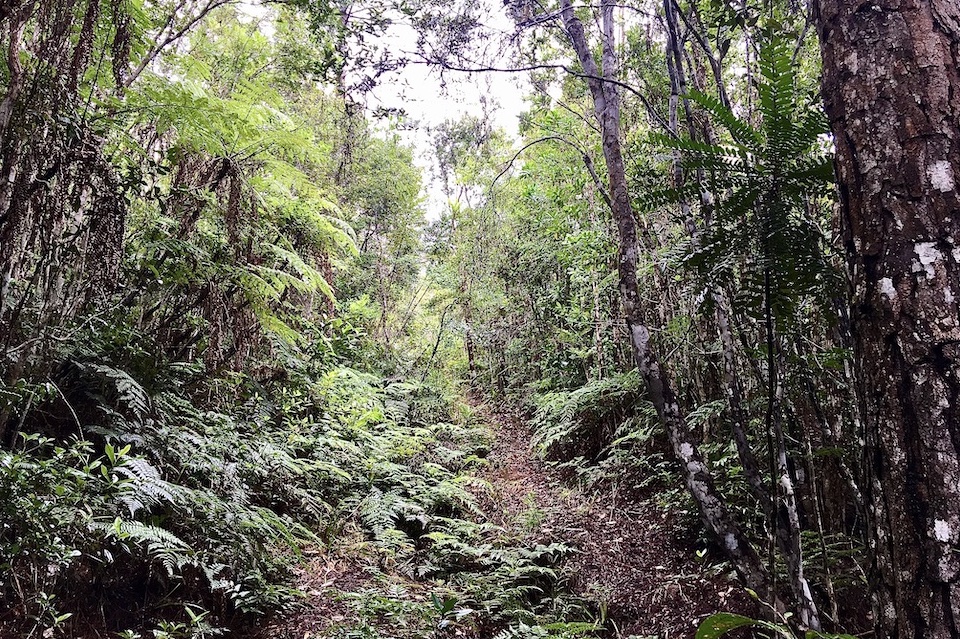
For most of the 20th century, the lands that compose today’s AHNP underwent extreme mining and hardwood exploitation. The main minerals extracted have been chrome and nickel.
The park’s territory includes the last known area in Cuba where the Ivory-billed Woodpecker (Campephilus principalis bairdii) could be seen. There have been no documented records of this species since the second half of the 1980s. It was also in AHNP’s lands that occurred the most recent sightings of the Cuban Kite (Chondrohierax wilsonii), also considered to be critically endangered.
The fauna species showing the highest levels of endemism in the park include: 20 species of amphibians (2 toads and 18 frogs), 90 % of them endemic, and 42 of reptiles, 74 % of them endemic.
Practical Information and Budget Tips
- The various trails and the boat ride in Humboldt Park count on excellent guides who belong to local communities and who know these lands since their childhood. Their knowledge covers the history of the protected area, the flora and the fauna, the area’s peasant culture and traditional medicine. They are really good at spotting the different plant and animal species that could otherwise go unnoticed by visitors were they to do the hiking on their own. Using a guide is compulsory – you cannot explore the park unaccompanied.
- To access the National Park, you have to go through the facilities at the entrance, which have a Visitors Centre as well as washrooms.
- The boat ride around Taco Bay and the Balcón de Iberia trail cost each 1,230 CUP per person, and that includes the guide service.
- A taxi for the day to Humboldt Park charges 50 EUR or USD. If you share this expense with 3 other travellers, the cost per person comes down to 12.50 EUR or USD.
- Here are three important things to make the most of these excursions: first, wear appropriate shoes for rocky and sometimes slippery surfaces. Second, a light rain jacket in case it rains. Third, a swimsuit so you can enjoy the crystal-clear, cool waters in rivers, waterfalls, and natural pools.
- Don’t forget to bring sufficient water to drink and a sandwich or other form of food.
- We encourage you to offer your guide a tip, an always welcome extra bit of income for a local family. Likewise, we encourage you to buy from local women the sweets they offer to visitors (almond or peanut brittle, or the grated coconut cucuruchos typical of Baracoa). Such treats can be a good source of energy during the hike. And such little expenses help more local families benefit from a sustainable tourism.
- We invite you to learn more about sustainable tourism in the Baracoa region.
- Don’t miss the photos and videos of El Copal trail and El Recreo trail in Alexander Humboldt National Park in Part 1 of this blog entry.
Sources Consulted and Recommended Reading
We are grateful to Wisdenilde Navarro (aka El Indio de Humboldt, official guide at the National Park), and Noel Coutin Lobaina, a great Baracoan flora connoisseur for having enriched our multiple explorations of Alexander Humboldt National Park. We appreciate the support and advice provided through the years by Geovanys Rodríguez (Director, AHNP Baracoa Sector) and Norvis Hernández (Technical Team Chief).
This blog entry draws some data and information from the following books or publications:
- Begué-Quiala, G. & Larramendi Joa, J., eds., (2013), Parque Nacional Alejandro de Humboldt, la naturaleza y el hombre, Ciudad de Guatemala, Ediciones Polymita, 176 pages.
- Field Museum (The), BIOECO, Museo Nacional de Historia Natural de Cuba, UPSA, and Cornell Lab of Ornithology, (2005), Rapid Biological Inventories – Report No. 14: Cuba – Alexander Humboldt National Park, 218 pages.
- Floirián, José Enrique (2015): Patrimonio cultural y natural de Baracoa. Editorial El Mar y la Montaña, Guantánamo, 136 pages.
- González Alonso, H. (Ed.) & Larramendi, Julio A. (photography), (2007). Biodiversidad de Cuba. Ediciones Polymita, Ciudad de Guatemala, 321 pages.
- González Alonso, H., L. Rodríguez Schettino, A. Rodríguez, C. A. Mancina & I. Ramos García (Eds., 2012), Libro Rojo de los Vertebrados de Cuba. Editorial Academia. La Habana, 304 pages.
- Núñez Jiménez, Antonio & Núñez Velis, Liliana (2008): La cuenca del Toa. Fundación Antonio Núñez Jiménez de la Naturaleza y el Hombre & World Wildlife Fund-Canada. Colección La Naturaleza y el Hombre, Volumen 17, 333 pages.
- UNESCO, World Heritage Sites List: Parque Nacional Alejandro de Humboldt.
Activities, Baracoa, Sustainable Tourism
Tags: Adventure Tourism, Beaches, Birdwatching, Culture, Ecology, Forests, Hiking, Natural Medicine, Nature Tourism, Rivers

Leave a Reply